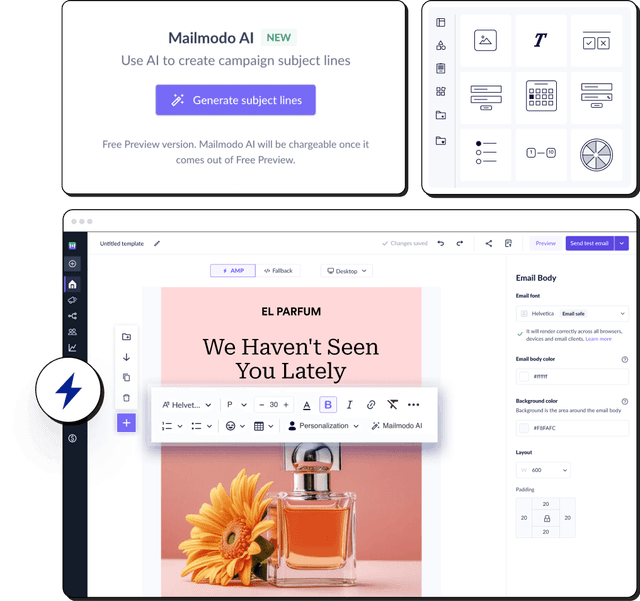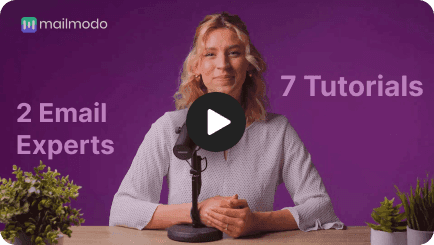As an email marketer, having an email funnel becomes indispensable, thanks to its ability to generate a higher ROI. But how do you get started? What are the tools you need? Too many questions. So, this is the guide you need if you want to learn about each stage of the email marketing funnel, with some interesting examples for each.
How To Create a High-Converting Email Marketing Funnel
What is an email marketing funnel?
Email marketing funnel is a strategy to help marketers study prospects' journeys and move them from prospects to paying customers by nurturing them with educational, promotional, and value-giving emails. It helps to visualize prospects' path from their first interaction to the conversion stage.
The four stages of the email marketing funnel are:
- Lead generation
- Lead nurturing
- Lead conversion
- Customer retention

We will discuss each stage later, but first, let's understand why you need an email funnel.
Why do you need an email marketing funnel?
Having an email marketing funnel, a sub-part of your broader marketing funnel, is crucial for the following reasons:
Email generates higher ROI than other channels
As per Litmus research report 2023, every $1 spent on email marketing generates an ROI of $36. Thus, email marketing is an effective channel for nurturing and converting new leads.
It will retain the existing customers
Depending on your industry, getting new customers is at least five times more difficult than keeping older ones. An email funnel allows you to familiarize yourself with your existing customers' journeys and use that to retain and create loyal customers.
It helps you understand the user journey
You can get insights into customers' preferences based on email marketing metrics like open and click rates. Understanding their behaviour will help you send personalized content at each stage of user journey.
It creates a positive brand experience
When you send them offers, discounts, and other relevant emails like replenishment and cross-selling emails you create a good brand experience for the user. It also helps in building trust and credibility as you will better connect with your user.
Now that you know the need for an email funnel, let's break down the stages to create an effective funnel.
How to build an email marketing funnel
An email funnel will differ depending on your industry, products/services, and goals. But, in general, the following stages are the same for every brand:
1. Top of the funnel (TOFU): Lead generation
The first stage of any marketing funnel involves generating leads. We would be wrong if we talked about generating leads through emails because lead generation does not necessarily start with email marketing. Lead generation in email marketing means collecting emails first. How can you do that? Well, you can capture leads from anywhere. This involves partnerships with established brands, your own website, sales, social media, hosting events and webinars, etc. This does include cold/outbound email marketing, however, we do not recommend doing that as it is unsolicited.
External sources are the only way to generate leads for your email marketing. So, the ultimate goal is to build a list of email subscribers or an email list. It is the first and foremost tool in your marketing arsenal and will pave the way for an effective email funnel. In addition to traditional channels, SaaS companies are increasingly leveraging community-driven platforms like Reddit to find active prospects and discussions relevant to their niche. Using a Reddit marketing channel for SaaS can help capture leads and engage potential customers in authentic, topic-specific communities.
Actionable tools
The first step in building your email list is to identify your target audience, engage with them, and communicate with them. This is also called an awareness stage, where you interact and build awareness about your brand with your potential customers.
Here are some ways you can build an email list:
1. Opt-in forms
Opt-in or signup forms are links on different website pages, such as the home page, blog pages, etc., through which leads can become a part of your email list. When users interact with your website, they can enter their email addresses to receive emails like your brand's newsletter, promotional emails, and other email campaigns you send.
However, to encourage users to share their emails, your opt-in pages must offer what they seek.
Example: Mailmodo offers a signup link on its homepage and guide page. Both opt-ins highlight benefits and what's in it for the leads if they sign up.

2. Lead magnets
Another great way is to create a dedicated landing page with a lead magnet - webinars, ebooks, online courses, podcasts, etc.
A landing page aims to give users free and useful content in exchange for their contact details. Landing pages are a win-win situation for both parties—users get free quality content, and you get email IDs.
To attract potential leads or customers to the landing page, you must distribute the most in-demand, quality content that will provide value to the user. If you give these potential leads what they want, they will sign up.
Example: Mailmodo's CRO school page is an example of an effective landing page. We send bite-sized, actionable tasks to improve conversions and revenue of your e-commerce store in 21 days. This helps them get valuable and actionable insight, encouraging them to subscribe.

3. Referral programs
We suggest you implement a referral program to reward existing customers for spreading word of mouth. You can offer incentives, offers, free products, or memberships in exchange for referrals.
Example: Skillshare provides a free month for the user and their friend in exchange for a referral.

Create campaign ideas with
AI Email Campaign Planner
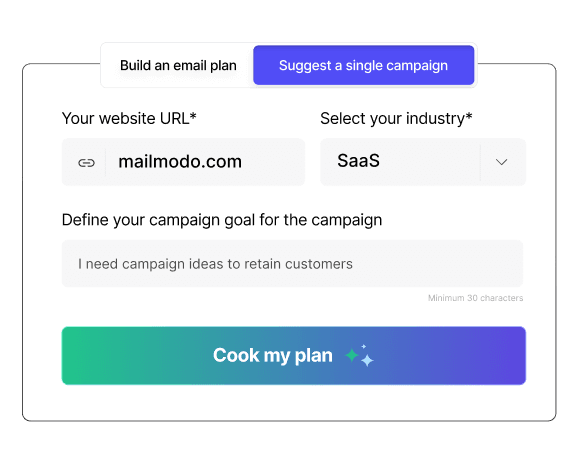
2. Middle of the funnel (MOFU): Lead nurture
The next stage in the email marketing funnel aims to nurture leads. Lead nurturing builds relationships with your leads across channels via promotional, engaging, and informational campaigns. This includes:
- Educating your potential customers about the benefits of your product.
- Guiding them throughout the buying process.
- Showcasing brand uniqueness.
Actionable tools
To nurture the leads, there are several tactics you can use. But, before that, you must segment your email list based on different criteria such as their preferences, demography, past interaction with your emails, geography, etc. You can get this data from your website and ESPs analytics. Once you have done that, here's what you can use to nurture leads:
1. Onboarding or welcome emails
A welcome email is the first email your customers see, so you must make a good impression. You can thank them for becoming a part of your brand and then offer them informative and valuable content, such as a list of blog posts, webinars to watch, an overview of your brand and your values, etc.
Example: Mailmodo's onboarding email engages the user with compelling copy and clear buttons on where to go next.

2. Free and valuable content
In the first stage of the funnel, you promised the user to deliver value-driven content to get more sign-ups, so delivering it to them becomes crucial. You can offer valuable and relevant content such as webinars, blogs, and ebooks to educate them.
Example: A good example is this email by Litmus, where they share educational content with their subscribers:

Want to do even better than this? Try personalization. Personalizing the email experience can engage your leads more. For example, if a customer has registered for your webinar, you can send them a recording of it once it's over along with a list related articles from your website on a similar topic.
Another great relevant example would be using location to personalize the content. Suppose you are a retail brand with stores in different locations. You can use the users' locations to send personalized emails.
Example: This restaurant brand mentions the availability of Burrito near the user's location who is reading the email with new arrivals that will excite them to buy from the restaurant; this is what we call personalization.
 Source: Zembula
Source: Zembula
3. Email sequences
Email sequences can be a great way to build and nurture relationships with your subscribers. You can send these emails automatically using email automation software to your subscribers to nurture or achieve a specific goal. These emails are triggered by certain predefined criteria, which can be time—or event-based.
Example: This sample welcome email flow will help you trigger the right emails and pave the way toward building a strong connection.

3. Bottom of the funnel (BOFU): Lead conversion and retention
You are now at the last and most important stage in your email marketing funnel: lead conversion and retention. This stage is crucial because you will now convert the potential leads you have nurtured for so long. So, let's dive in:
Lead conversion
The first two stages were the stepping stones to push users to the actionable stage—conversion. If your leads made it to this stage, your goal here should be to give them a little trigger to convert, as they are familiar with your industry, brand, and products, thanks to the previous stages in the funnel.
Actionable tools
During this stage, your strategy must be to educate the subscribers about your product and its benefits and send them offers or discounts so they are compelled to finally buy your product. So, you have what they need, and they want what you are offering. Great! Now, all you need to do is push them to convert.
CTAs (Call-to-action) play a major role here. You can experiment with different CTAs, their copy, placement, and button style, and A/B test them to determine which works best.
So, here are a few tactics we think you can use to get them to convert:
1. Time-sensitive offers
People respond more to urgency due to the fear of missing out. So, create urgency in your emails via countdown timers, limited coupon deals, exclusive birthday offers, etc.
CTA examples: Buy now, Sign up, Book a call, Grab this offer, Use coupon.
Example: True Grit Texture Supply's email creates urgency by mentioning that their sale will end tonight, so the user feels compelled to buy the product.

Source: Really Good Emails
Example: Uplers' exclusion deals where they make the user feel special, getting them to convert.
 Source: Really Good Emails
Source: Really Good Emails
2. Abandoned cart emails
Abandoned cart emails are the emails you send when a user adds something to the cart but does not complete the purchase. You can use data from your website to analyze customer behavior and interaction. Then, use this data to send personalized abandoned cart emails to push them towards completing their transaction.
CTA examples: Complete your order, Use the coupon, Checkout now, Go to the cart.
Example: Days' retargeting campaign uses compelling copy and discounts to urge users to take an interest in the product they were previously thinking of buying.

Source: Really Good Emails
Customer retention
Congratulations, you've reached the end of the funnel. The task here is to retain customers with relevant emails that resonate with them the most. You can leverage data here again to personalize the content, collect feedback, and reward them for loyalty.
What will be the outcome? Not only will you keep your customers close, but you can also gain their referrals and recommendations in exchange for incentives and offers.
Actionable tools
To keep your qualified leads by your side, here are some types of emails to send:
1. Feedback and review emails
Asking for users' feedback can help them feel that you care about their opinions and want to do better in the future.
Example: Tillamook's feedback email simply asks for the customers' opinion about their brand to understand how they can improve and do better.
 Source: Really Good Emails
Source: Really Good Emails
Can you guess what's missing that could make this even more interesting? It's an AMP email form that could get Tillamook a higher response, as users can submit their responses within the inbox.

Using Mailmodo's AMP feedback forms, Allround achieved a 28% submission rate on feedback forms and a 14% submission rate on polls.
2. Weekly wrap-up and summary emails
Such emails keep users informed about their activities within their inboxes. By giving information about how much time they spent or what activities they did within your platform, you can connect the customer to your brand. This homely feeling will retain and engage the customer.
Example: Spotify sends wrap-up or summary emails to their subscribers every year to stay connected and relevant to their audience.
 Source: Really Good Emails
Source: Really Good Emails
3. Product update emails
Product update emails are informative and helpful to the user and increase engagement with your product or service.
Example: Figma's product update email covers all the new features added recently.
 Source: Really Good Emails
Source: Really Good Emails
4. Cross-sell email campaigns
Cross-sell email campaigns push customers to buy additional or related products based on previous purchases. You can use the user's behavioral data to send cross-sell emails, such as product recommendations, replenishment, and back-in-stock emails. Due to various products and services, such emails are more prevalent in retail brands.
Example: Adidas's cross-sell campaign engages with a unique email copy and recommends products that match the customer's recent purchase.

Source: Avada
5. Milestone email campaigns
These emails are specifically designed for individual users to make them feel special. It counts when a brand remembers and celebrates small things about its email subscribers. So you can send special deals and coupons for users’ anniversaries, birthdays, etc.
Example: Chipotle's birthday email uses exciting birthday visuals, copy and adds birthday discounts to make the customer feel special.
 Source: Really Good Emails
Source: Really Good Emails
So, this was all about how to build an email marketing funnel. To help you build a better email marketing funnel, learn more about email flows below:
Achieve a better email marketing funnel with email flows
While having a solid email marketing funnel is important, you must also ensure that each step is perfectly executed to achieve better results from this funnel. To do this, you can use email flows.
Email flows basically help you send the right email at each stage of your email marketing funnel.

The above image shows an example of the ecommerce industry. We have created a set of email flows for industries such as: SaaS, Real estate, Fintech, Edtech.
You can also use Mailmodo’s AI journey builder, where you simply type a prompt, and it automatically generates triggers and campaign blocks to optimize your email flows.
Your AI Assistant for Everything Email Marketing
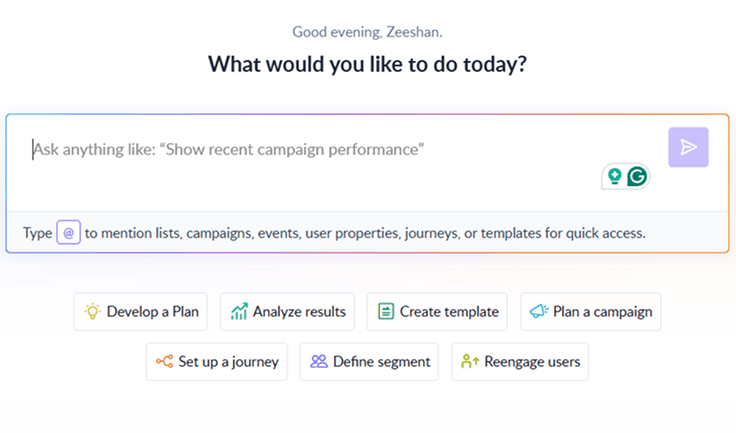
Wrap up
A well-planned email marketing funnel will increase conversion rate and ROI. However, you must be patient and consistent in your marketing efforts, as you may not see results in just a few days.
Though building an email funnel journey is common among all marketers, do not fear to craft a unique funnel for your brand that helps you achieve your business goals. You must develop ideas, consistently test and refine your email marketing strategy, and generate higher returns. In addition, you should analyze users' journeys and send them relevant, valuable, and informative content. And in return, users will reward you with brand loyalty and higher conversions.
Frequently asked questions
Email marketing funnel stages are the different phases a potential customer goes through, from initially discovering a brand to making a purchase and beyond. Email marketing funnel stages include: Generating leads, nurturing leads, encouraging and converting, and retaining them.
Creating an email marketing funnel involves guiding potential customers through various stages of engagement, ultimately leading to conversions. You must define your goal, know your audience and map out the funnel stages.
What should you do next?
You made it till the end! Here's what you can do next to grow your business:
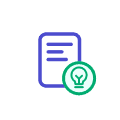
Get smarter with email resources
Free guides, ebooks, and other resources to master email marketing.
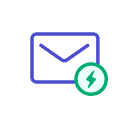
Do interactive email marketing with Mailmodo
Send forms, carts, calendars, games and more within your emails to boost ROI.

Consult an email expert
30-min free email consultation with an expert to fix your email marketing.
Table of contents
You might also like
Enter with an idea.
Exit with a winning email campaign.

Brainstorm email campaign ideas with Mailmodo’s AI assistant

Build precise segments in seconds with AI segmentation

Generate ready-to-use email templates with AI
Experience true AI email marketing automation with Mailmodo
Trusted by 10000+ brands

